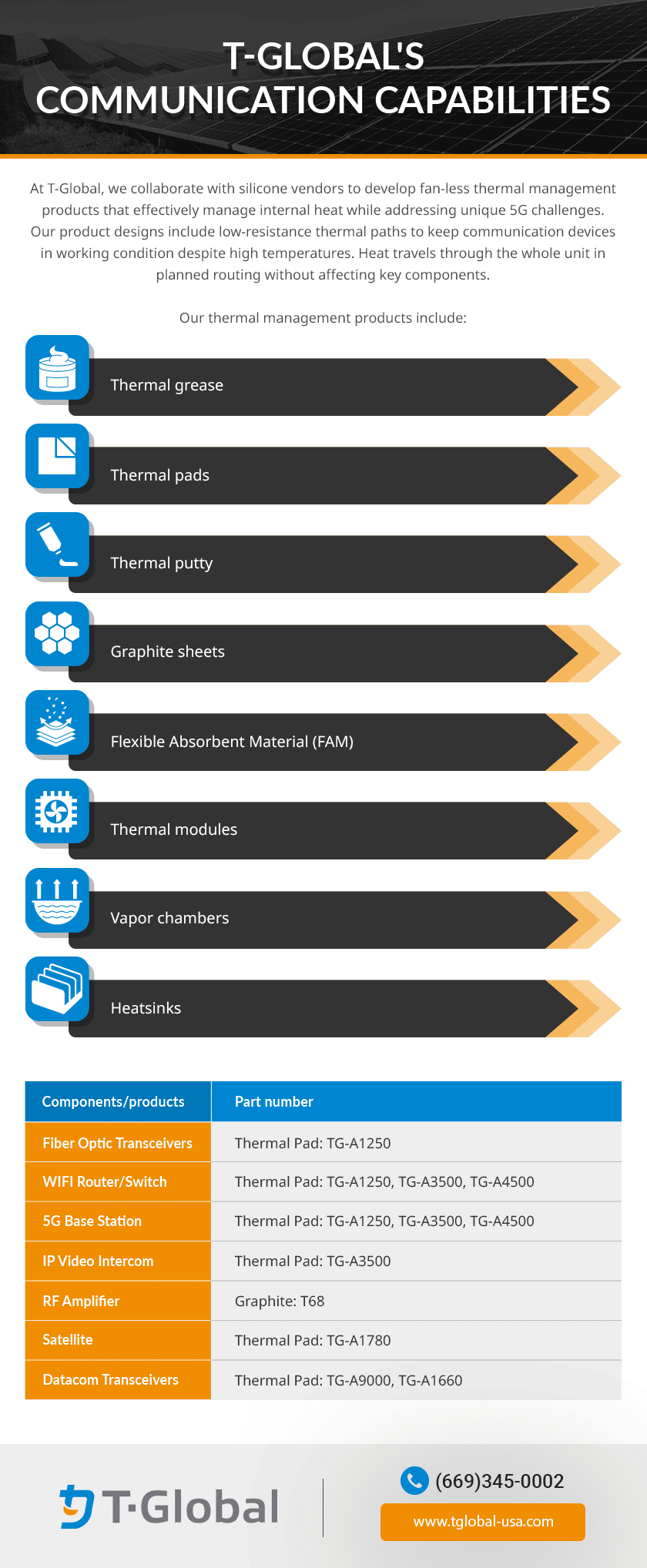To realize 5G communication services on a global level, telecom operators are working hard to build the foundation for 5G infrastructure. Additionally, various companies are rolling out their own 5G infrastructure plans, with efforts that include:
- Cloud operators are creating the necessary computing and storage devices
- Fixed wireless access (FWA) companies are uniting residential internet access with Wi-Fi 6/ Wi-Fi 7 standards
- AI experts are popularizing and embedding AI technologies into smartphones
The shift to 5G wireless technology is driven by its numerous benefits, including ultra-reliable low-latency communication (URLLC), enhanced mobile broadband (eMBB), and massive machine-type communication (mMTC), all of which facilitate the growth of AI and the Internet of Things (IoT).
Compared to 4G-LTE, 5G wireless technology provides higher frequencies that will continue to rise. High frequencies result in increased heat generation from 5G components and devices, posing certain challenges related to thermal management. At T-Global, we are at the forefront of heat dissipation technology. We can provide effective thermal management solutions that protect critical 5G components while optimizing transmission performance.
Benefits of 5G Technology
Our heat dissipation solutions help companies realize the numerous benefits of 5G wireless technology, including:
- Faster data transfer. 5G users experience ultra-low latency, allowing for real-time communication and data processing.
- Greater capacity. 5G wireless technology supports a much higher number of connected devices simultaneously. This makes it ideal for the growing IoT, smart cities, remote healthcare, smart manufacturing, and much more. It also enables fast, stable connections even in densely populated environments.
- Enhanced mobile broadband. 5G speeds significantly improve 4K streaming, virtual reality (VR), and online gaming experiences.
As 5G becomes more available, numerous industries will see transformative impacts due to faster data speeds and increased connectivity. For example:
- Healthcare. 5G technology makes real-time patient monitoring and remote surgeries more feasible.
- Automotive. 5G allows autonomous vehicles to communicate with infrastructure and other vehicles more efficiently.
- Manufacturing. Manufacturing facilities utilizing 5G technologies benefit from improved data analytics and increased automation capabilities.
